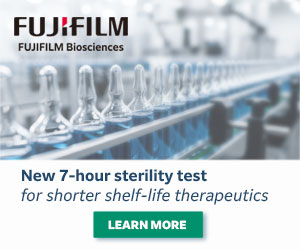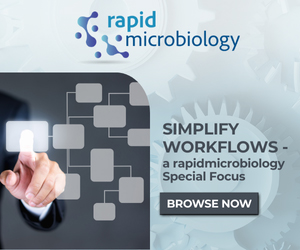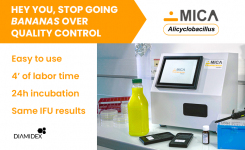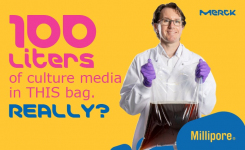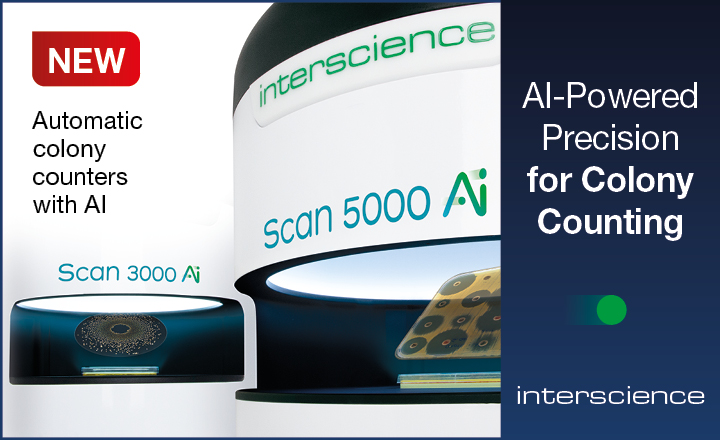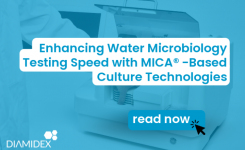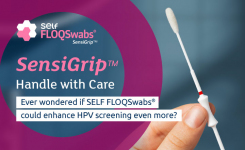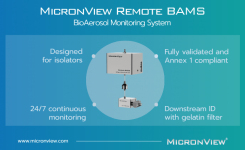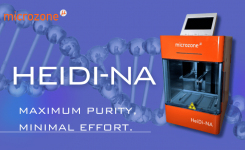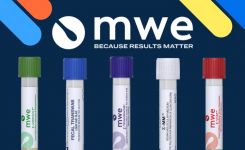
Key Points
- Automation can provide significant time and cost savings, especially for larger laboratories
- Highly skilled staff are released from repetitive routine manual tasks for result interpretation, customer service and managerial activities
- Automation reduces the potential for human error and can provide more consistently reliable and accurate results
- Automation makes tracking and storing results easier
Doing everything by hand is not the preferred method of achieving maximum efficiency in any industry in the twenty-first century. But microbiological analysis based on traditional culture methods is a labour-intensive operation involving a series of complex manual handling steps and demanding a high level of training for technicians. Such an operation might be said to be crying out for automation. Industrial and clinical chemistry laboratories have been quite extensively automated for many years. More recently, clinical microbiology laboratories have seen increasing levels of automation as their workloads have grown and the demands placed on them to produce reliable and rapid results have become more urgent. The fully automated clinical microbiology laboratory is now a reality. For various reasons food microbiology laboratories have lagged behind the clinical sector in uptake of automated systems and equipment. But this situation has been changing, driven by commercial pressures and by the adoption of new test methods more suited to automation than traditional procedures.
The potential benefits of laboratory automation are clear. Employing large numbers of highly trained staff is expensive and obtaining those staff becomes ever more difficult. Utilising high quality staff to carry out the repetitive manual operations needed in traditional microbiological testing – often little more than drudgery – is also wasteful. Automation can remove much of that burden from staff and allow them to concentrate on management of the process and on interpretation and reporting of results. Furthermore, tests requiring a series of manual steps are vulnerable to human error. Automation can take out much of the potential for error and deliver more reliable results.
The advantages may be obvious, but that does not mean that all food microbiology laboratories will benefit equally from adopting automated systems. For example, small labs with varied and unpredictable workloads require a level of flexibility in operation that does not sit well with automation. In general, larger labs with a high sample throughput and a limited menu of standard test methods are the most likely to benefit. Food microbiology laboratories considering adopting the technology need first to identify opportunities for automation in their operations and then analyse the potential benefits and drawbacks very carefully before evaluating equipment to take advantage of those opportunities. Automation requires significant capital investment and the benefits must be shown to justify the initial outlay.
Laboratories are advised to follow a structured process for identifying automation opportunities as follows:
1. Conduct a thorough analysis of the workflow in the laboratory with the aid of detailed flow diagrams to identify the limiting steps in the process. Implementing automated technology at these points is likely to provide the greatest benefits. The analysis should consider the full range of tests carried out and also the degree of variation in laboratory workload.
2. Review commercially available equipment to determine whether there is a technological solution to the limiting steps identified. The question to be asked is whether the automated solution will have an ongoing beneficial impact on the overall efficiency of the laboratory.
3. Conduct a detailed cost-benefit analysis of each potential solution. Consider likely capital and running costs, quantified productivity benefits, potential quality improvements, the potential impact on staffing levels, return on investment and any accreditation or validation issues.
4. Draw up a shortlist of solutions that will give real benefits and evaluate each in greater detail to determine whether they can be easily assimilated into existing and planned operations in the laboratory.
Technologies
There are a number of commercially available automated and semi-automated systems designed for use in food microbiology laboratories. The majority are aimed at providing efficiency gains at one of the key points in the traditional laboratory process: sample preparation; media preparation and dispensing; plating out of sample dilutions; plate reading and colony counting. These four steps account for most of the total man-hours required to carry out microbiological analysis by traditional culture methods, and therefore provide the greatest potential savings if automated. In addition, automated and semi-automated instruments are available for the detection and identification of pathogens and other micro-organisms by non-cultural techniques, such as PCR.
Traditional culture methods
1. Sample preparation
The most time consuming step in the preparation of solid and semi-solid food samples are the preparation of the initial dilutions and serial dilutions. The initial dilution typically weighing out a fixed weight of sample and adding it aseptically to a pre-prepared standard volume of sterile diluent. Automation in the form of gravimetric diluters can make this process much more efficient.
In its simplest form the gravimetric dilutor consists of a balance linked to a diluent dispensing pump. The operator is able to transfer an unknown weight of sample to a sterile container. A processor within the unit then calculates the volume of diluent required to give the pre-set dilution factor, and the pump dispenses the appropriate amount of diluent. This relatively simple device enables considerable time savings and is also able to improve dilution accuracy. More sophisticated systems are able to dispense several different diluents on demand, so that samples can be prepared for standard plate counts and pre-enrichment cultures at the same time. Some devices can also be used inside laminar flow cabinets and include label and barcode printers to aid in sample identification and traceability.
Serial dilutions created by the standard method using test tubes are very labor intensive and the long term repetitive handling of the caps and tubes as well as manual mixing of individual samples can cause pain in muscles and tendons. These symptoms are known as repetitive strain injury (RSI). In addition most labs prepare dilution tubes themselves by repetitive washing and filling of test tubes with 9 ml diluent followed by capping and sterilization after each use.
A new innovative approach for serial dilutions offers the Inlabtec Serial Diluter. The system uses single-use sterile bags thus completely eliminating the labour and resource intensive preparation of dilution tubes. Due to an intrinsically safe and automatic dilution and mixing process the system excludes human errors, minimizes the risk for RSI and delivers consistently reliable and accurate serial dilutions for objective plate counts.
2. Media preparation and dispensing
The preparation and dispensing of culture media is another very time consuming operation in the traditional microbiology lab. Many larger labs employ technicians whose sole function is media preparation. The application of automated technology at this stage therefore has great potential for efficiency savings and a range of equipment is now commercially available.
Microprocessor controlled ‘media preparators’ can be programmed to prepare and sterilise large volumes of agar and liquid media ready for dispensing. Some of these devices have sophisticated control systems able to apply multi-stage temperature cycles so that complex media with heat-sensitive components can be prepared in a single process without operator intervention. Media preparators come in various sizes and are often multifunctional, with options for use as simple autoclaves or water baths. In addition to significant savings in technician time, these devices also reduce the potential for error and variation in media preparation.
Media preparators can also be linked to automated plate pourers to provide further efficiency gains. These devices are also microprocessor controlled and can be programmed to deliver a pre-set volume of agar medium at an optimised temperature into sterile Petri dishes much more accurately than by manual means. Plate pourers vary in capacity from small bench top machines for 20 plate batches, right up to fully automated systems designed to run almost continually filling hundreds of plates every hour. Some systems utilise UV-light sterilisation at the filling point and can also stack and label the poured plates. Combining a media preparator with a suitable automated plate pourer can produce a system able to provide a consistent supply of labelled plates to the laboratory bench with almost no staff intervention.
3. Plating out of samples
Plating out serial sample dilutions and enrichment cultures onto agar media is probably the operation where automation has made the least impact in the food microbiology laboratory to date. However, there are commercially available instruments able to produce efficiency savings at this stage.
The spiral plater has been around for many years, but recent instruments have eliminated many of the problems that affected earlier devices. The spiral plater operates by delivering exponentially decreasing amounts of the initial sample dilution out from the centre of the plate in a spiral pattern on the agar surface. This effectively allows a set of serial dilutions to be inoculated onto a single plate. After incubation, colonies are counted in separate sectors of the plate corresponding to known sample volumes to calculate the result. Modern instruments can operate in fully automated mode with self-cleaning and sterilising steps between each sample and can be programmed to deliver the sample in a number of different patterns.
A more recent innovation is the TEMPO® “automated quality indicator” system from bioMérieux. This employs a miniaturised most probable number (MPN) technique on a multi-well ‘card’ to enumerate bacterial counts in food samples. The media used in the system contain a fluorescent indicator so that the card can be scanned by a reader, which then automatically calculates a result expressed as CFU/g of sample.
4. Plate reading and colony counting
Any analysis of workflow in the food microbiology laboratory is likely to show that reading and counting plates after incubation occupies staff for a significant part of each day. It also requires experienced staff to obtain reliable results.
Automated colony counters have been around for many years, but modern instruments have benefited from improved imaging technology and sophisticated software, so that they have become much more accurate, rapid and reliable. Modern colony counters typically use high-resolution digital cameras to produce a detailed colour image and image analysis software with much improved ability to distinguish individual microbial colonies from food particles and other debris. Counts are available in seconds. Colony counters can be programmed to count pour plates, spread plates and spiral plates and are usually connectable to a PC to record counts and help establish sample identification and traceability. Many instruments include several different light sources so that coloured and fluorescent colonies can be counted.
Non culture-based detection and enumeration methods
The recent wider acceptance and uptake of pathogen detection methods that do not rely on conventional culture-based technology has lead to a number of commercially available instruments, many of which lend themselves to semi or full automation. The majority of these instruments are based either on immunology or molecular biology technology.
Immunology-based instruments
The use of enzyme immunoassay (EIA) and enzyme-linked immunosorbent assay (ELISA) technology in food microbiology is now widespread for detecting common foodborne pathogens such as Salmonella enterica and Listeria monocytogenes. While some of these assays have been developed into simple-to-use lateral flow tests, others have been fully automated and are available as complete pathogen detection systems. Two example of such systems are the VIDAS® family of products developed by bioMérieux and the Tecra™ Unique Plus instrument from 3M. Other standard ELISA-based pathogen detection kits can also be semi-automated using a suitable microplate incubator/readers and other accessories, such as plate washers.
PCR-based instruments
The detection of foodborne pathogens using polymerase chain reaction (PCR) technology has become widespread in the last ten years and a number of commercial products designed for the food industry are now available. These are necessarily automated to some degree, especially during the amplification and detection steps. One of the first examples was the BAX® detection system from Hygiena International. Others now available include the TaqMan® pathogen detection kits from Applied Biosystems and Bio-Rad’s iQ-Check™ Real-Time PCR Kits. Recently a joint venture between Biotecon Diagnostics and Swiss robotic liquid handling specialist Xiril has developed the foodproof® RoboPrep+ Series of six different instruments designed to automate Biotecon’s magnetic bead DNA extraction and purification technology for PCR-based foodborne pathogen detection. This means that it is now possible to set up a fully automated PCR pathogen detection system specifically designed for food microbiology laboratories.
Other technologies
There are also automated and semi-automated microbial detection instruments based on technologies other than immunology or PCR, but which may have applications in some laboratories.
One of the best examples is flow cytometry. Flow cytometers use a direct microbial detection and counting technology, which can be applied to non-filterable liquid foods such as soft drinks and dairy products. Commercial instruments are available for the food industry, with an example being the BactiFlow ALS® instrument from AES Chemunex.
Future developments
While there is already significant potential for automation in food microbiology laboratories, it is probable that existing and developing technologies will soon find applications in the food industry. Dutch based Kiestra Lab Automation already offer fully automated medical bacteriology laboratories and it may not be long before the trend towards larger centralised food testing laboratories makes such developments economically viable in the food sector. The increasing sophistication of industrial robot technology may also allow some of those laboratory operations still needing manual intervention to be automated. For example, companies such as Thermo Scientific already offer a range of articulated robotic arms designed specifically for laboratories. The food microbiology laboratory of the future may look very different.
Get the latest updates in Rapid Microbiological Test Methods sent to your email? Subscribe to the free rapidmicrobiology eNewsletter



